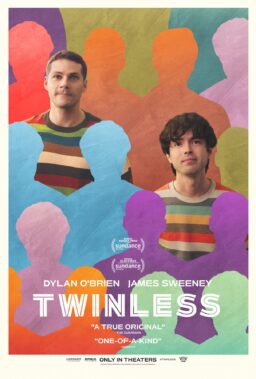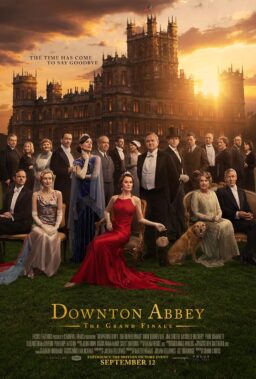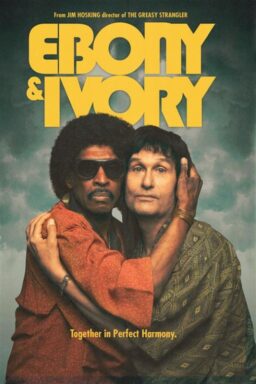One of the most remarkable love stories in recent television history took place on Netflix’s 2018 series, “Everything Sucks!”, between two teenage girls, Kate (Peyton Kennedy) and Emaline (Sydney Sweeney), or as their fans referred to them, “Kemaline.” Not only were the characters brilliantly performed, the roles themselves were never written as stereotypes or tokens, enabling the adolescent lovers to transcend any barriers that would’ve normally limited their depth. As Sweeney was filming the show, she received the script for Lara Gallagher’s achingly personal directorial feature debut, “Clementine,” a drama exploring the dizzyingly complex bond that blossoms between two women in an Oregon lake house, and to the actress, it felt like “a really beautiful circle.” The film’s two central characters, Karen (a revelatory Otmara Marrero) and Lana (Sweeney), pleasingly subvert audience expectations at every turn without ever being defined by their race, gender or sexual orientation. During our recent phone interview, Sweeney stressed that “it’s important for everyone to be able to find themselves in different characters onscreen.”
Representation is also a crucial factor to Marrero when choosing projects. “As a Latin woman, as a person of color, it’s really beautiful when a script treats its characters simply as humans, instead of viewing them solely through the prism of their culture and race,” she told me. “Karen is just a woman going through heartbreak, which makes her story super-relatable to anybody who watches it.” Hovering on the periphery of Karen and Lana’s story is a third woman, not unlike Janice Rule in Robert Altman’s “3 Women,” who happens to be Karen’s much older ex and the actual owner of the lake house. Her nagging presence hints at the cyclical nature of the dynamic forming between Karen and Lana, as it shifts from platonic to sensual to maternal and back again. Since the saddening cancellation of “Everything Sucks!,” which is wholly deserving of a second season, Sweeney has delivered indelible turns in HBO’s “Euphoria” and “Sharp Objects,” Hulu’s “The Handmaid’s Tale” and last year’s Oscar-winner, “Once Upon a Time … in Hollywood,” yet it is in “Clementine” where she receives her finest showcase to date.
In anticipation of the film’s release this Friday, May 8th, in virtual cinemas (a full list of venues can be found here), Sweeney and Marrero spoke with RogerEbert.com about the benefit of being in the moment, the vitality of intimacy coordinators and the uncertainty of Hollywood’s future.
Did the lack of rehearsal time actually enhance the sense of unknowing that reverberates throughout your scenes together?
Otmara Marrero (OM): A beautiful thing happened sort of by accident. For Sydney and my relationship, not having a lot of time to get to know each other enabled that tension between us to develop organically as we filmed scene after scene. There was something really cool about not having a lot of prep time and not knowing her, but the chemistry was there from the first day we got onset. I also did some “hokey pokey” kind of prep for the role. I did dream work where I talked to my subconscious through my dreams, which was really cool as well.
Sydney Sweeney (SS): We had this beautiful rawness with each other because we didn’t spend weeks and weeks preparing together, and then we just easily hit it off and built an amazing friendship. It was a very good casting.
OM: Yes, our casting director, Nicole Arbusto, was on-point with this one.

The film’s overarching theme of cyclical relationships extends to the compositions, such as when we see Lana standing in the same spot on the balcony where we saw Karen earlier. Was there an attempt to echo each other’s performances?
OM: Yeah, for sure. I think there was a lot of mirroring going on in the movie. Karen was healing through her time with Lana, while Lana was learning and developing as well. It formed this weird circle of constant growth and healing occurring between our characters, which was reflected in how we mirrored one another.
SS: I think another moment that’s kind of similar to the one you mentioned on the balcony is when Karen and Lana are dancing. They mirror each other with their arms behind their backs, as they pretend to make out by basically kissing the air. It was a beautiful way of showing how the movie was going to progress, and how the characters were going to evolve. That dance is like its own storyline without the need for a storyline to be written in. It’s a visual storyline, which I thought was really powerful.
To what extent does having a female director bring an added level of comfort when portraying scenes of intimacy? I found them to be beautifully restrained in “Clementine.”
OM: I did love the restraint because it built up this tension that was really eerie and worked well for the film. Being directed by a woman is honestly a dream. I’ve been lucky enough to work with some great, very respectful men, but you just feel more at home when it’s a woman. You feel more comfortable and you can be more vulnerable. It’s just more seamless.
SS: Because the story was so close to Lara’s heart, it was awesome to be able to work with her. We had this really amazing, small crew and the whole experience just felt very intimate. It felt like we were all creating this intimate piece of art, and I think Lara did an amazing job of putting it together.
Has the recent prevalence of intimacy coordinators, as a result of the #MeToo movement, revolutionized how these scenes are staged?
SS: I had my first intimacy coordinator on “Euphoria,” and it changed my approach to everything. I love having one and I think they should be considered a necessity on every set. I actually brought my intimacy coordinator, Amanda Blumenthal, onto my Amazon movie, “The Voyeurs.” I wish that more productions were aware of this and we made it a priority.
OM: This might be a silly question, but what is an intimacy coordinator? I haven’t gotten there yet, but it sounds like I need one.
SS: They are basically an advocate for your voice when you may not feel comfortable speaking up. I was lucky because I felt very comfortable on the set of “Euphoria.” I could easily speak to [show creator] Sam Levinson or whomever I was talking to, but the intimacy coordinator is just there to be that extra person who’ll come to you before you start filming a scene. They’ll walk you through everything that is going to happen and even if you’ve signed a contract saying, “Yes, I’m going to do this or show this,” you can still change your mind. You can tell that person, “I don’t feel comfortable doing that,” and they will be the ones who communicate that so you won’t feel as bad.
When you go into a scene, they’ll make sure that everything is choreographed and everyone is okay and comfortable with what is happening. They’ll provide safety garments or undergarments or little mini yoga mats if you don’t want your bodies to touch. They are there to be that protection when you may not feel it is your place to speak up, even though it is, but it helps you in those moments where it’s difficult to do so. Of course you don’t want to tell a director, “No.” You want to make their vision come to life. So if you’re doing a scene fifteen times and you don’t want to say, “I don’t know if I want to do this anymore,” the intimacy coordinator will tell the director, “Okay, one more take.”
OM: That’s a huge bonus in this business. I haven’t had any bad experiences, but I think that sounds amazing because I definitely do remember one sex scene where I saw something in the background that just didn’t feel right. I had to really muster up the courage to speak up, and I remember putting on my nice voice. I wasn’t uncomfortable, but I definitely felt like, “Aw fuck, I have to say something that’s a little scary—okay, here I go.”
SS: That’s why the intimacy coordinator is there to speak for you. You never had a bad experience where you needed one, but why wait for the bad experience to happen and then hire someone? Why not just make everyone’s lives easier and not have to experience that? It makes that whole conversation go away.
<span id=”selection-marker-1″ class=”redactor-selection-marker”></span>
Sydney, you’ve spoken in the past about writing diaries for your characters, and I’m wondering whether you researched the experiences of abuse survivors in preparation to play Lana.
SS: In the journaling that I do, when I create my characters, I definitely do very deep, extensive research into whoever or whatever might’ve made my character who they are today, and so I did look up different stories. We’re very lucky that we have access to the internet, which is the only place in the world where we can read whatever is out there, so I was able to find many stories, whether it was a YouTube video that someone posted or a diary entry in a blog. I’d read them and try to incorporate what I found into Lana’s backstory.
The shattering monologue that Lana delivers detailing the violation she experienced has so many intriguing aspects, particularly when she smiles while saying, “I like being told what to do.” Was that moment planned or did it happen naturally?
SS: It was definitely organic. I don’t like to plan or rehearse any scene, really. Actually, didn’t we do that in one take?
OM: Yeah, nothing about that monologue was planned. It sucked for me because I was on the other side in full-blown tears, and I wasn’t supposed to be that affected, but I was. So it was actually my coverage that we had to do a couple times because Sydney just nailed it. That was the first time we shot the monologue, and it turned out to be the take you see in the film.
SS: I remember the sound guy, Zach Kahl, crying in the closet. [laughs] I was beyond nervous though because that was three pages of a monologue, and I don’t like to run lines really. The dialogue should just feel organic, like how you and I are not running lines right now, we’re just talking. That’s how I always approach my characters, so I was terrified that I was going to completely forget something. It was so scary.
Since the film industry is currently in a state of flux due to COVID-19, what sort of cinematic narratives do you hope will spring from this period?
OM: That’s a great question! When this pandemic started happening, I was doing a lot of research online, because I realized that I had never really lived to see a virus like this. I started researching the Spanish flu and I read a lot about how Hollywood boomed after the pandemic had ended. It makes so much sense because when things like this happen, people run to entertainment like music, films and TV to feel safe, to feel heard, to feel understood and be seen—and also just to be comforted.
I began thinking that maybe this is the second wave that Hollywood will see after a big flu and things will just flourish afterward. I don’t know how they will flourish, but I have a lot of faith that from this hardship, a lot of beautiful stories will be born. This is a time for self-reflection where we can tap into our inner voice that isn’t normally heard. I’ve just been sitting here in my thoughts and healing wounds that I didn’t even know were still open, so I can’t even imagine what writers are going through right now. I’m sure they have a pen and paper in hand just going at it.
SS: I can’t wait to read what they’ve written!
OM: Me too. I can’t think of any specific stories that I would necessarily want to see. But I know that there are some beautiful things that will come out of self-reflection and healing and just knowing how fortunate we are and how much we take for granted now that we can’t connect with other humans and we can’t go outside. It just makes you really think about what’s important. I’m really excited to see all the stories that will be coming out of that.
“Clementine” opens in virtual cinemas via Oscilloscope on Friday, May 8th.












